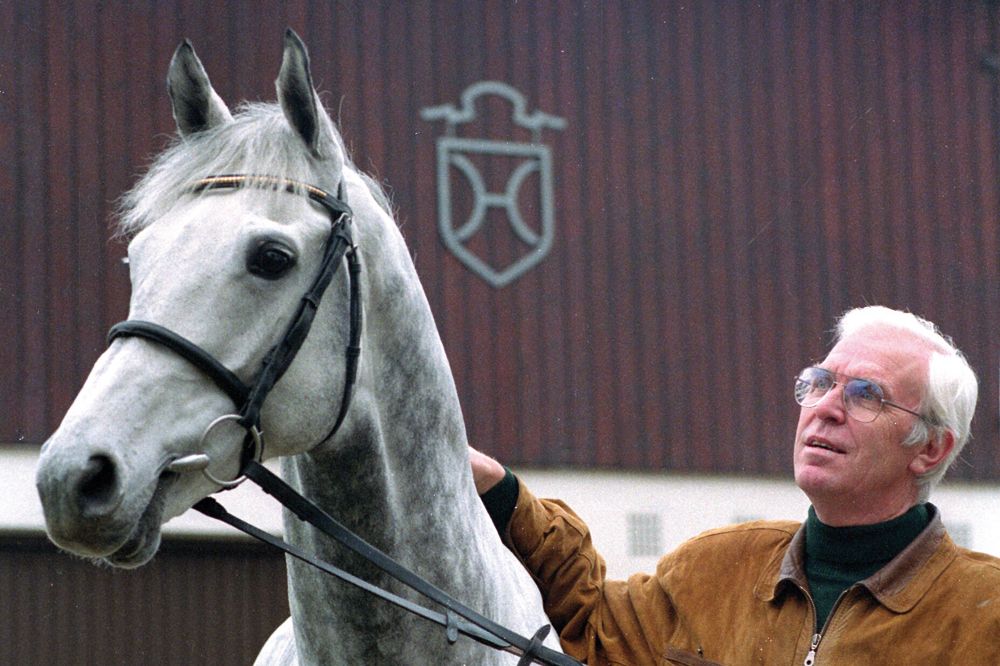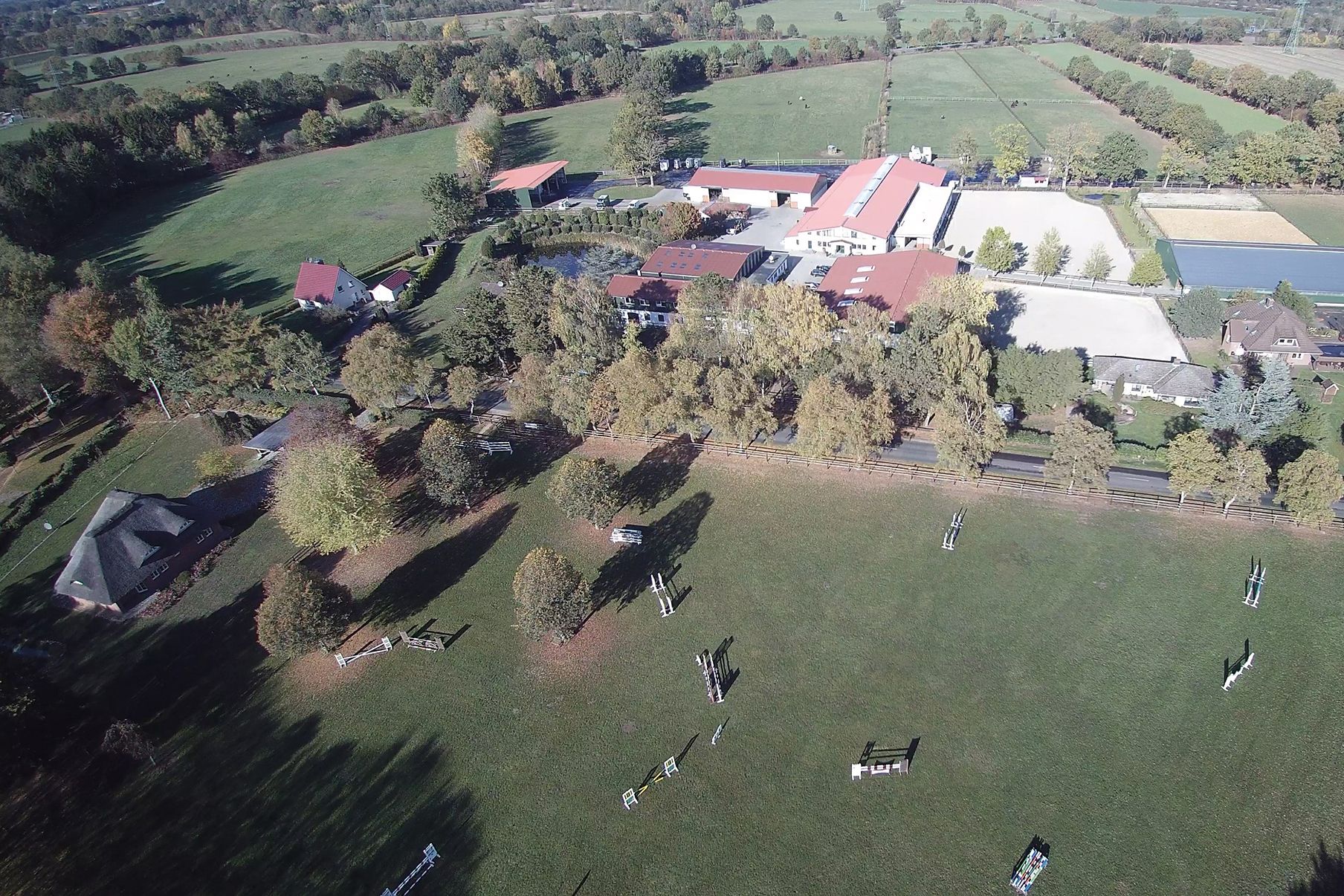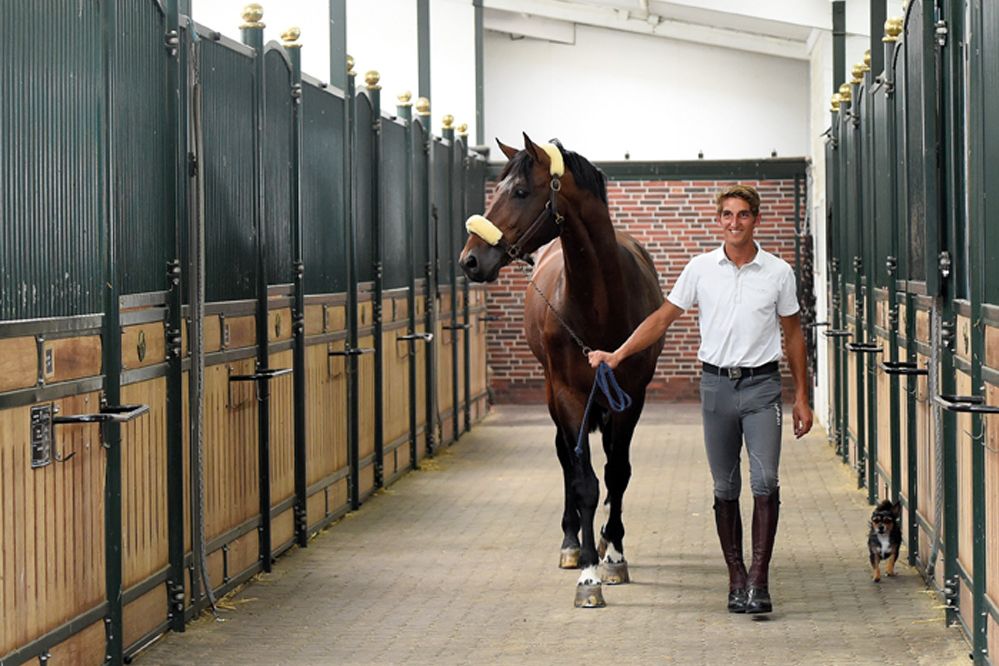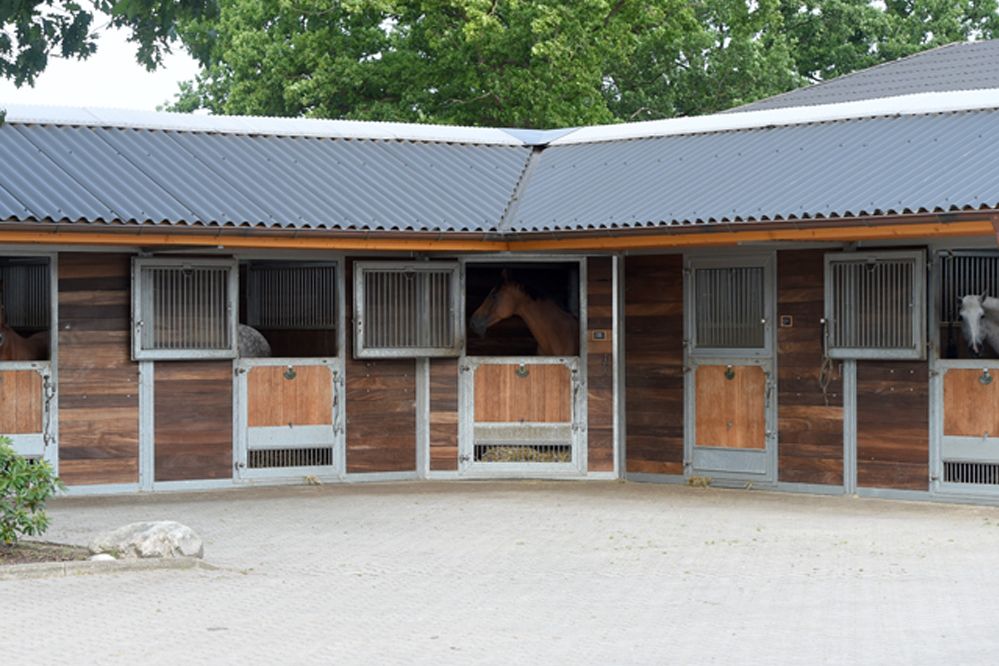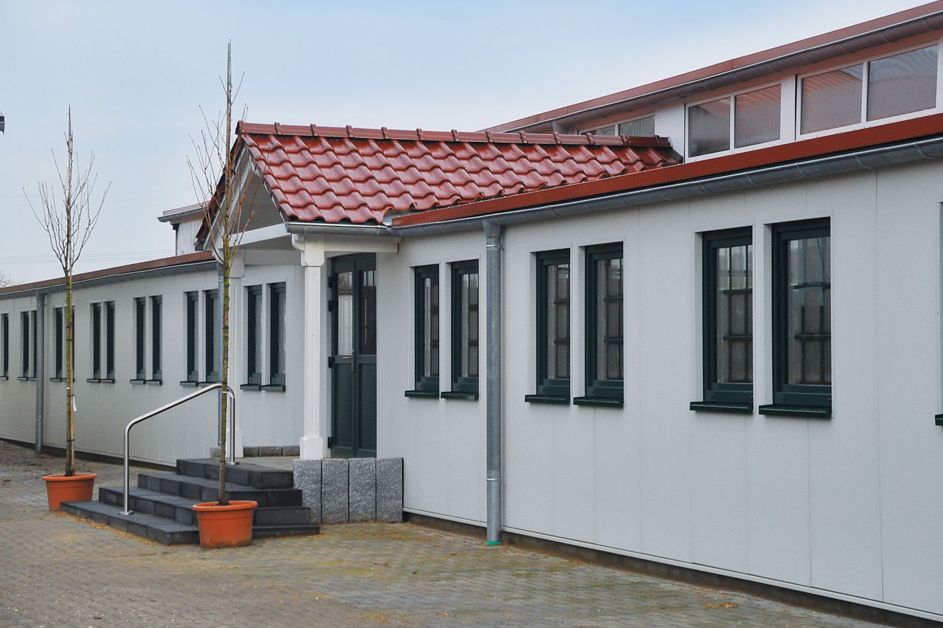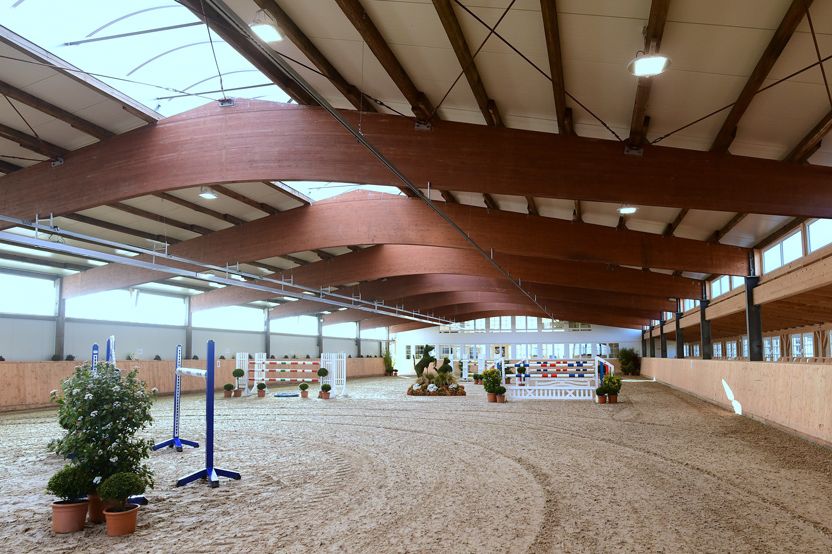Hengststation Maas J. Hell in Klein Offenseth
Gustav and Herta Hell bought the Hell family’s central farm on Horster Landstrasse in 1933. Their younger son Max took over the existing poultry farming business. The older son Maas Johannes Hell – born in 1934 – soon focussed exclusively on horses. Next to his parents’ house he built a facility for breeding and marketing of horses. Together with his wife Magdalene he ran the business that quickly turned into one of the best known in Europe.
From 1971 to 1982 Maas J. Hell managed the Verband’s business in Elmshorn and was decisive in improving breeding and marketing of Holsteiner performance horses. Having stallions performing in sport to prove their worth and importing sires for improvement – like the legendary Cor de la Bryère A.N. – are lasting results of his visionary work.
In 1982 Hell decided to leave the management for the Verband in favour of continuing and improving his private station and marketing of stallions in Klein Offenseth.
Subsequently the stallions he had discovered found entry into nearly all breeds in Europe. His marketing success speaks for his business as well. Horses from Klein Offenseth were exported to 38 countries in the world. Many of them later made advertisement for Holsteiner horses by competing successfully at important shows.
By running a large advertisement in the magazine „Pferd+Sport“ Maas Johannes Hell announced the merits of his six sires. That was in 1984. At that time his facility lacked space for a large number of mares to cover and therefore only the two young stallions Cantus and Camaro were stationed in Klein Offenseth. Four more stallions moved to their sires’ quarters in Dithmarschen with Lothar Völz at Wöhrden. These were the two sons of Almé, Ahorn Z and Athlet Z, as well as Latus by Landgraf I and Catango by Caletto I. In the following years the latter was exchanged for Fasolt and the thorougbred Affido xx. They stayed until 1990 before they moved to Willi Feil, who kept Ahorn Z, Athlet Z, Latus and Salient xx at Marne – Westerdeich until 1995.
The station at Pohlsee Stud was added because the number of stallions grew over the years. From 1989 to 1996 it was home at first for Cantus, Langata Express xx and Aldan and later for Exorbitant xx, Tin Rocco and Alasca.
Towards the end of the 1990’s artificial insemination and shipping of semen grew in importance. That time dams were covered by Hell sires at Wacken with veterinary Dr. Tassemeier, at Bargenstedt with Boje Peters and at Risum Lindholm.
The use of thoroughbreds was of special importance for Maas Johannes Hell. It began with Affido xx in 1987. Salient xx, Exorbitant xx, Bold Indian xx, Langata Express xx, Gamblers Cup xx and Mytens xx followed. The discovery of Lauries Crusador xx was lucky coincident. Thanks to a very close connection to Landstallmeister Dr. Bade Lauries Crusador xx was leased to Niedersächsisches Landgestüt at Celle. In 1991, he moved into his sire’s quarter in Landesbrück, centrally within Hanoverian breeding area. In 2006, he was voted Hanoverian Stallion of the Year. It came with this sire that Hell’s stallions were marketed via Niedersächsisches Landgestüt. Sires Calido I, Acord II and Acorado I had a strong input in Hanoverian breeding. From the beginning Maas Johannes Hell took care of his sires’ progeny. Year after year he bought many foals from their breeders. The foals were reared in Klein Offenseth and either prepared as young stallions or performance horses. Out of this large lot of offspring, many became important sport horses, like Calvaro with Willi Mellinger, Canturo with Bernado Alves, Lux Z with Jerry Smit and Libero H with Jos Lansink.
The stallion station in Klein Offenseth became famous not only because of Maas Johannes Hell’s extraordinary equestrian personality, but it was the sires that took care of that. At the top – next to their sires – Acord II, son of Ahorn Z, and Calido I by Cantus. Both took off brilliantly by convincing at their stallion performance test. Their careers in jumping were out of the book. They won multiple young horses’ competitions up to medium level. Acobat was Holsteiner Jumping Horse Champion at Bad Segeberg and reserve Bundeschampion. Five years old, he became Germany’s most successful stallion with 21 wins. This duo’s offspring showed a special quality as well. In 1999, the children of Acord II dominated Warendorf’s Bundeschampionat des Deutschen Springpferdes. Calido I developed into a top sire of jumping horses as well. Three of his children competed at the 2008 Olympic Games in Hongkong.
In 1997 Maas Johannes Hell passed away. His wife continued to run the stallion station together with Thomas Mohr until this long serving Pferdewirt (assistant instructor) choose his own path some years ago.
Early in 2011, Magdalene Hell decided to pass on the station to Herbert Ulonska. The businessman and passionated horseman from Hamburg had made a name for himself in Germany by rearing and leasing stallions and organising international horse shows. Up to now he competes successfully up to advanced level, predominantly riding his stallions. The station’s proven sires remained. Calido I, Acodetto, Canstakko, Canturo and Singulord Joter belong to that category since years. Newly welcomed to Hengststation Maas J. Hell include the interesting stallions Lentini, Cash and Carry, Class de Luxe, Hym D´Isigny and also the premium stallions Conditus, Central Park, Colcannon and also Quiwi Capitol. And new are the stallions For Ever Jump (For Pleasure), he won international classes and Crossway one new approved stallion of Calido I.
In 2019 Central Park won several young horses classes to 1,30 m and Canstakko is qualified for the Olympic games after several starts in international classes.
Following the principles of Maas J. Hell Herbert Ulonska plans to continue this stallion station that has left a mark in the business with owned breeding stallions in Schleswig-Holstein.

